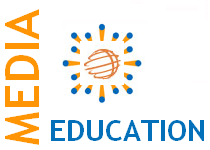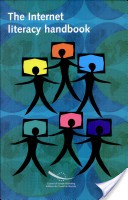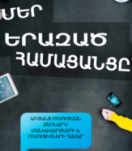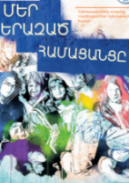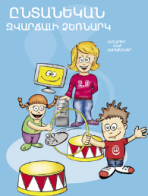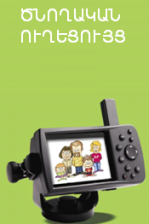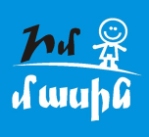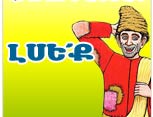Media Education in Armenian Schools
by Haykaz Baghyan and Narine Khachatryan
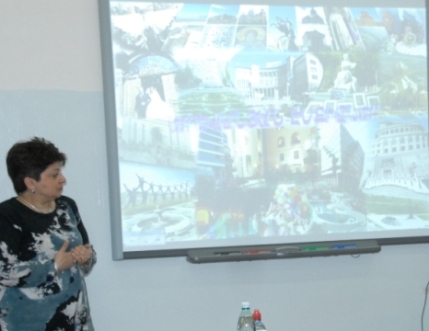
The content of local media has not reflected the development of the society until now. Currently, weak local media are substituted by the external content: thus, external resources of Internet consumed by Armenian local users account for around 70 per cent of the whole Internet traffic of the country.
On the other hand, telecommunication infrastructure and purchasing power do not allow the population to fully consume a western-style media. In that respect, Armenia gains time to grow media-literate generation.
The Silicon Valley of the former Soviet Union, Armenia supplied 30 per cent of computer equipment for the Soviet industries.
Today, even with weak telecommunications, the software industry of the country is the most successful and fastest growing, and its share in GDP (3 per cent) is as high as in Germany. Within the last five years the US “Best Technological Product of the Year" award was twice given to the products developed in Armenia.
Having a 50-year-old tradition of ICT skills and highly literate population (100 per cent of population are literate and 20 per cent of adults have higher education), Armenia seeks to adopt the strategy of empowering the audience, rather than of protecting.
Today, state budget does not allow introducing media education as separate subject in all secondary schools simultaneously. At the moment, only 500 out of 1500 secondary schools are computerized and connected to the Internet.
Non-professional media, inadequate to country’s current development and the low level of media literacy of the society have already had sad results.
However, a rapid economic growth of recent years, de-monopolization of telecommunications and new investments in media infrastructures, particularly in TV stations, are changing the situation in the country. Several western-style TV channels are already operating in Armenia.
By the end of this year, additional 600 schools will be connected to the Internet, 20 out of them through ADSL, technology of faster data transmission.
The major part Internet resources consumed by Armenian users are of external origin. The situation could be explained by the absence of language barriers. However, we should state, that local media content is not corresponding to expectations of Armenian Internet users (70 per cent of them are school children and university students).
On the other hand, the greatest part of the Internet resources, used in Armenia, just as in Georgia and Azerbaijan, is of improper content.
At this moment, secondary school teachers cannot prevent children from inadequate Internet content. Schools do not have their own educational networks, and children are already able to break content filters.
Many Armenian school children are advanced in software design. At the same time, they are lacking skills of creating aesthetic and adequate media content.
Interactive teaching materials for nearly 20 disciplines have been created in Armenian universities; however there are no methodology and standards to incorporate them in school curricula.
In these conditions, primitive approaches to media education can only harm the educational system. Integration of ICTs in education requires profound changes.
Media Education Center of Armenia based its projects on the assumption that education is the main strategy to empower audience members to draw their own conclusions about what they see and hear in the media.
On the other hand, initiatives of Media Education Center have been directed to raising the quality of education of the country. Thus, the program “Enhancement of Mathematics Education in Armenia” is aimed at development of mathematical capabilities from pre-school to adults by increasing the interest of the society toward mathematics.
A number of pilot projects have been implemented by Media Education Center at the Mkhitar Sebastatsy Educational Center, which is the Experimental and Research union of the national ministry of education and science.
Media school has been established, where students of 7th to 12th grades have been taught news-reporting and film-making. Trainings aimed at improving writing skills have been carried out for teachers of languages. 9 media outlets have been created at all levels starting from pre-school to high school and college.
To develop students’ ICT skills necessary for media production, Media Education Center organized trainings for students and teachers (PowerPoint, Photoshop, HTML, PHP). Eventually, students became trainers for their teachers.
Multimedia technologies were introduced in teaching most of the subjects at all levels: from basic school to education college. Our approach has been “media education is interdisciplinary and cross-curricular”. Media education incorporated in different subjects has been grounded on production skills and information retrieval.
Media Education Center focused not on creation of aesthetic teaching materials corresponding to high standards, but instead, on students’ and teachers’ participation in the process of creation of electronic teaching materials, making the process of media production an indispensable part of classroom activity.
Students and teachers joined their efforts in production of educational electronic materials: more than 300 teaching products in English, Geography, Science, History, and Literature were created within a year.
Media Education Center created a model of a school web-site, operating as a creative environment for students’ media production: it unites sites and periodicals produced and updated exclusively by students from pre-school to high school. 20 teachers and 60 students were initially involved in creation of structure and content production for a mini web-portal. Creation of a new local school network enabled another 200 teachers and 1000 students to participate in the work.
Experts of Media Education Center recently started introducing new software, which will enable middle and high school students to create electronic materials in line with SCORM standards.
In respect to students’ attainment, apart from computer skills, knowledge of human rights and media, the results of general exams in math, physics, and Armenian language, have not differed from average results in the country, though surpassing the last year’s outcome. Our experts explain this success by a sharp rise in motivation caused by extensive usage of media technologies in the classrooms.
As our monitoring showed, active production of new content resulted in a considerable change of the quality of Internet resources consumed by students. Young people generally shifted from “entertainment” to “education”, and the volume of traffic also reduced from 18 Gb/per month to 12 Gb/per month per 1000 student.
A great effect was observed after starting so called “electronic Friday”. On that special day of a week students’ best media products are demonstrated to a wide audience of teachers, representatives of the high tech industry and mass media.
Our experts stress that formal approaches to media education can harm the educational system. Advantages of having a separate media literacy subject are obvious. On the other hand incorporating media education in several disciplines we receive a rich pool of teaching materials, produced by students and teachers. Meanwhile, we lose important skills of critical thinking related to interpretation of media and human rights media education.
July, 2008
